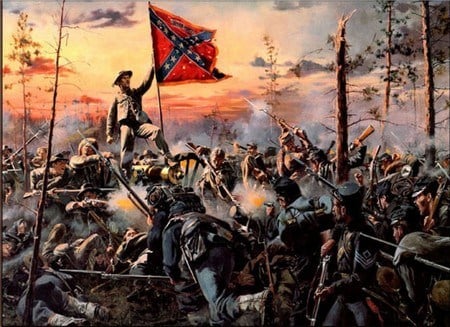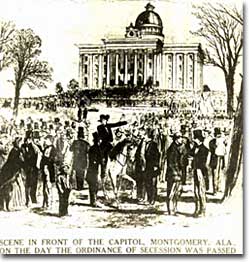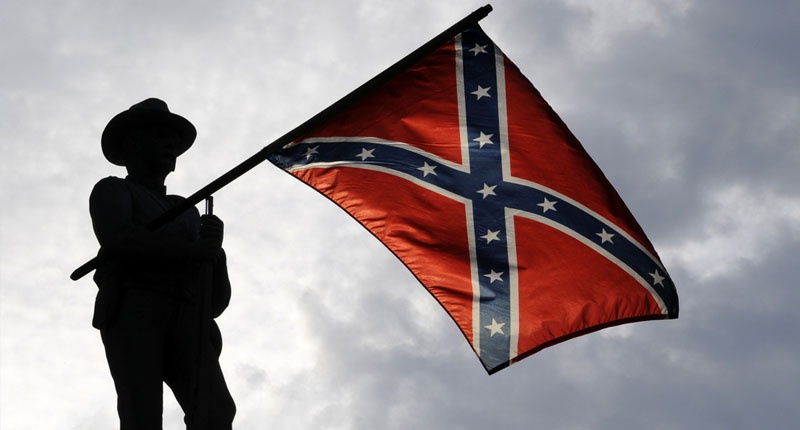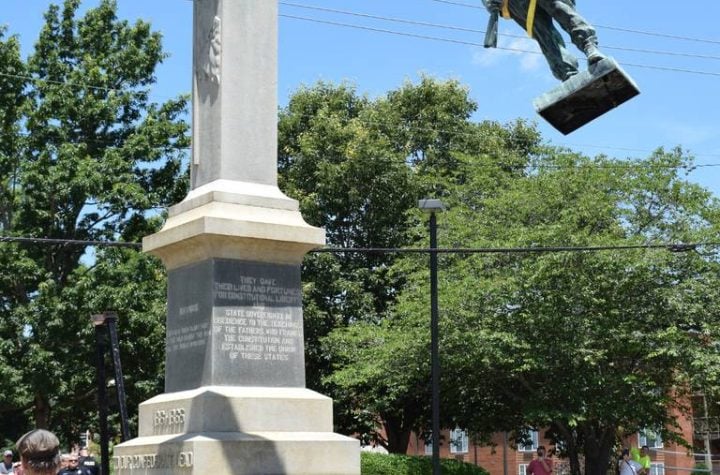
The annals of history, particularly during the tempest of the Civil War, often yield tales of valor and identity. Among such narratives is the curious case of Alabama’s flag—or rather, the lack thereof—during this tumultuous period. Scholars, you see, generally concur that Alabama didn’t have an official state flag throughout the Civil War. As such, the modern historical community often overlooks any emblem representing Alabama from that era. Here, allow me a dramatic sigh, for it’s quite perplexing to fathom a state as fiercely independent and proud as Alabama without a universally recognized banner.

Venturing into this inquiry, we encounter a peculiar parallel with the broader Confederate narrative. Initially, even the Confederacy itself meandered through the early war years without an official flag, not until 1863 when a formal design was finally adopted. In their initial rush, the Confederate Congress had hastily raised a flag by March of 1861 but, in a stunning oversight, neglected to pass an actual flag law. The Confederate 1st National Flag thus fluttered, albeit unofficially, as it was never enshrined in the laws of the fledgling nation.
Despite the absence of formal records or government proclamations regarding an Alabama flag from this period, it strikes one as odd that a populace so passionate about states’ rights would lack a symbolic standard. Especially given that Alabama had boldly declared itself an independent republic even before the formation of the Confederate States of America in February in Montgomery.

Indeed, in December 1860, William Russell Smith was elected as a delegate to the Alabama secession convention, which convened in Montgomery on January 7th, 1861. Smith, who also organized and commanded the 26th Alabama Infantry Regiment and later served in the Confederate Congress, compiled a noteworthy document titled The History and Debates of the Convention of The People of Alabama. On page 56, he provides a compelling snippet:
“MR. DOWDELL moved an amendment, that when this Convention is in open session, the flag of Alabama shall be raised from the Capitol. The amendment was accepted, the motion adopted, and the doors of the Convention opened.”
This brief passage suggests the presence of a “flag of Alabama” at that time, albeit not formally recognized. The context also hints at why the Stars and Stripes were not deemed suitable for the secession discussions—Alabama was readying to leave the Union it once flew under.
The plot thickens as we delve deeper into this historical mystery. What did this elusive Alabama flag look like? The search continues, dear reader, in the fervent hope that these historical shadows may yet yield some light.
In the initial installment of our exploration, we grappled with the modern assertion that Alabama had no state flag during the Civil War. Our journey into the past began at the Alabama Secession Convention. As we delve deeper in Part II, we uncover intriguing revelations.
FLAG OF THE ALABAMA SECESSION CONVENTION
The convention, a fervent gathering marked by heated debates, lasted four days. It culminated on January 11th, 1861, with a decisive vote for secession. Until that moment, the convention’s proceedings were closed to the public. However, following the vote, the doors were flung open, and as described by William Smith, the delegate from Tuscaloosa we met in Part I, the scene was stirring:
“When the doors were thrown open, the lobby and galleries quickly filled to bursting. Crowds of ladies, their enthusiasm palpable, were eager to witness the momentous events. Yesterday’s love songs had transformed into today’s political anthems. PRESENTATION OF THE FLAG. At the same moment, a grand flag was unfurled in the hall’s center, its size so majestic it nearly spanned the great chamber! Gentlemen clambered atop tables and desks to better display its emblems, and the air was filled with deafening cheers, the ecstatic crowd seemingly boundless in their joy.”
This flag, ceremoniously unveiled, featured two distinct designs on each side. A modern reproduction can be seen below:
View the Alabama Republic Secession Flag
One side of the flag bore the image of Liberty brandishing an unsheathed sword in one hand and a small flag adorned with a single star in the other. Above her, the words “Independent Now and Forever” boldly declared Alabama’s stance.
The reverse side depicted a rattlesnake nestled in a cotton bush, a symbol steeped in American iconography as a defender of liberty since the 1760s. The Latin phrase “NOLI ME TANGERE” (Do not touch me) underscored a clear warning against interference, echoing a sentiment of unyielding independence.
Despite its grand unveiling, this flag was not a hasty creation, suggesting the convention’s outcome was anticipated. Today, it is often referred to as the Alabama Republic Flag or the Flag of the Alabama Secession Convention. Yet, it is crucial to note that this was not the official state flag at secession.
William Smith himself expressed surprise at the flag’s presentation: “Mr. President—I was not prepared for this surprise. I knew nothing of this intended presentation.”
The flag flew over the capital for less than a month before being damaged by high winds and retired permanently, now preserved in a delicate state at the Alabama Department of Archives and History and not available for public viewing. Sadly the below page is not on the Alabama archives site and is on Archive.org, WOKE forces at work wiping away history.
Alabama Official Symbols and Emblems
Alabama Secession Convention Flag
“Independent Now and Forever”
1861

On January 11, 1861, the Secession Convention passed a resolution designating a flag designed by a group of Montgomery women as the official flag of the convention. This flag has often been referred to as the Republic of Alabama Flag.
One side of the flag displayed the Goddess of Liberty holding in her right hand an unsheathed sword; in the left a small flag with one star. In an arch above this figure were the words “Independent Now and Forever.”
On the other side of the flag was a cotton plant with a coiled rattlesnake. Beneath the cotton plant are the Latin words: “Noli Me Tangere,” (Touch Me Not). This flag was flown until February 10, 1861, when it was removed to the Governor’s Office after it was damaged by severe weather.
It was never flown again.
While we know this flag was unique, the Convention Journal hints at other flags symbolically echoing the new state of affairs: “The roar of cannon was heard, and the new flag of Alabama displayed its virgin features from the windows and towers of the surrounding houses.”
Indeed, the ceremonial flag held clues to Alabama’s sentiments—Liberty herself held a flag, a blue field with “ALABAMA” over a single star. In his History of the Debates of the Convention, Smith captures the flag’s symbolic significance: “We accept this flag; and, though it glows with but a single star, may that star increase in magnitude and brilliancy, until it out-rivals the historic glories of the Star-Spangled Banner!”
Thus, the narrative of Alabama’s flag during the Civil War continues to unfold, with more insights.





More Stories
Sad Woke Charlottesville liberals Melt down infamous statue of Robert E Lee
NC Appeals Court rules for Town of Louisburg in removal of Confederate monument
The Confederate Flag History: Everything You Should Know